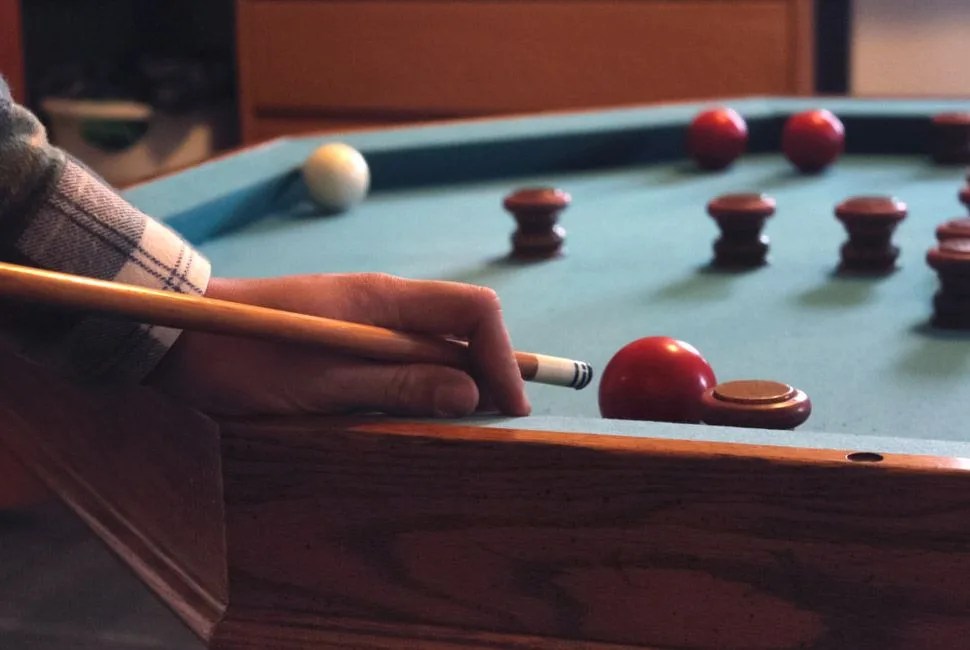Generally speaking, pool sucks. And I suck at pool. After years of public shaming, I still can’t get it right — the physics of the eight-ball game are too perfect, its learning curve too steep. Breaking is a nightmare; the behind-the-back trick shot is fascinating, and a pure mystery. But I recently discovered bumper pool, a lesser-known offspring of the greater billiards family, and I fell in love. Even Elvis was a fan. (I also love Elvis.)
Bumper pool’s objective is simple: be the first player to sink all five of his balls into the opponent’s pocket. There is no cue ball, and players simply hit their own balls directly with their cues. But obstacles abound; there are 12 bumpers, two flanking each end pocket, plus a cluster in the middle. Players shoot for the first turn, trying to bank a marked ball (called the “King-ball” or “K-ball”) around the bumpers — closest to the pocket goes first. One must sink their K-ball before moving onto the others. When I’m hot, I can make it on the first shot, setting myself up with a killer defense; my next move usually involves knocking my opponent’s K-ball back near his pocket. What a feeling.
One of the biggest attractions to bumper pool is the size of the table, which is considerably smaller than that of regulation pool. A 1970 issue of Popular Mechanics encouraged readers to build their own. “Taking approximately one-third the space that a conventional table requires,” the article read, “it means that apartment dwellers can now enjoy the game.” What an eight-ball table is to a low-lit dive bar, a bumper pool table is to a comfortable living room. It fits. Comparatively, they’re also cheap, had for around $500 — in the case you’re not an industrious Popular Mechanics reader.
What converted me, and keeps me coming back, however, is the game’s democracy; call it billiards for the masses. There are few strategies, and a player doesn’t even have to be good to win — only more efficient than his opponent. Luck helps too, especially when you suck at pool (generally speaking). The first shot is important. But even if you don’t sink it, you only need to get close.
